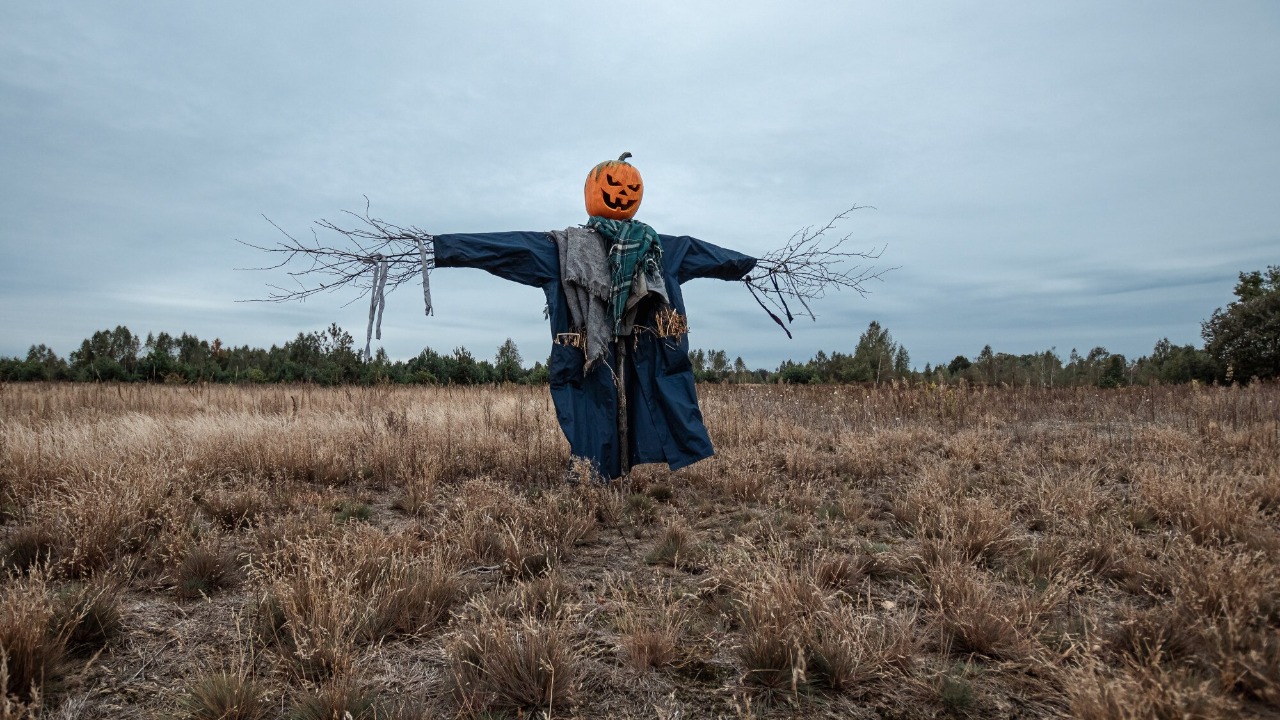
Scarecrows have a rich history that stretches back to ancient agricultural societies, where they served as protective figures. Over millennia, these figures have evolved from practical tools into symbols of seasonal fright. Their modern association with fall horror is prominently featured in a Popular Science article dated October 17, 2025. This transformation reflects both cultural shifts and technological advancements in agriculture.
Ancient Origins in Agriculture and Ritual
The earliest evidence of scarecrows dates back to ancient Egypt around 2,500 BCE. Farmers used wooden statues of gods in their fields, believing these figures could invoke protection through their perceived supernatural presence. These early scarecrows were not just practical tools but also carried a spiritual significance, as they were thought to ensure a bountiful harvest by warding off birds and other pests (Popular Science).
Similar practices were observed in ancient Greece and Rome, where farmers employed stuffed effigies or scare devices made from rags and sticks. These figures were strategically placed in vineyards and grain fields, blending practical pest control with ritualistic elements to ward off evil spirits. The belief in the magical properties of scarecrows was widespread, with farmers attributing their crop success to the figures’ “watchful eyes” in pre-Christian European traditions (Popular Science).
Medieval and Folklore Transformations
During medieval times, scarecrows took on new roles in European folklore. Often dressed in tattered clothing to mimic beggars or witches, these figures not only scared crows but also embodied community superstitions about harvest guardians. In 14th-century England, straw-stuffed figures were hung on poles during festivals, serving the dual purpose of pest deterrence and symbolic warding against famine or plague (Popular Science).
The infusion of pagan magic into scarecrow traditions was particularly notable in Celtic cultures. Here, scarecrows were adorned with herbs and charms to harness seasonal spirits for bountiful yields. This practice highlights the scarecrow’s role as a bridge between the natural and supernatural worlds, reflecting the deep-seated beliefs of the time (Popular Science).
Industrial Era Adaptations and Rural Life
In the 19th century, scarecrows underwent significant changes in the United States and Europe. Innovations in agriculture led to the use of mass-produced clothing scraps and old hats, transforming farmhands’ castoffs into more humanoid scarecrows. This adaptation improved their effectiveness in large-scale cornfields, reflecting the era’s shift towards industrialized farming (Popular Science).
Scarecrows also became embedded in American Gothic literature and art, particularly in regional folktales from the Midwest prairies. These stories often depicted scarecrows as lonely sentinels of the frontier, symbolizing the isolation and challenges faced by rural communities. However, with the advent of chemical pesticides in the 20th century, the practical use of scarecrows declined, and they gradually shifted towards being decorative farmstead icons by the mid-1900s (Popular Science).
Modern Pop Culture and Horror Icon Status
The 20th century saw scarecrows transition into the realm of entertainment. Films like “The Wizard of Oz” (1939) featured a memorable Scarecrow character, humanizing the figure while hinting at its underlying eeriness. This portrayal marked the beginning of scarecrows’ association with the horror genre, where they became symbols of isolation and supernatural dread (Popular Science).
Scarecrows gained further prominence in horror through works like Stephen King’s “Children of the Corn” (1977) and its adaptations. These stories often depicted abandoned scarecrows in desolate fields, evoking a sense of unease and fear. Contemporary fall festival trends have capitalized on this imagery, with haunted hayrides and pumpkin patch displays featuring grotesque, animated scarecrows as seasonal attractions since the 1990s (Popular Science).